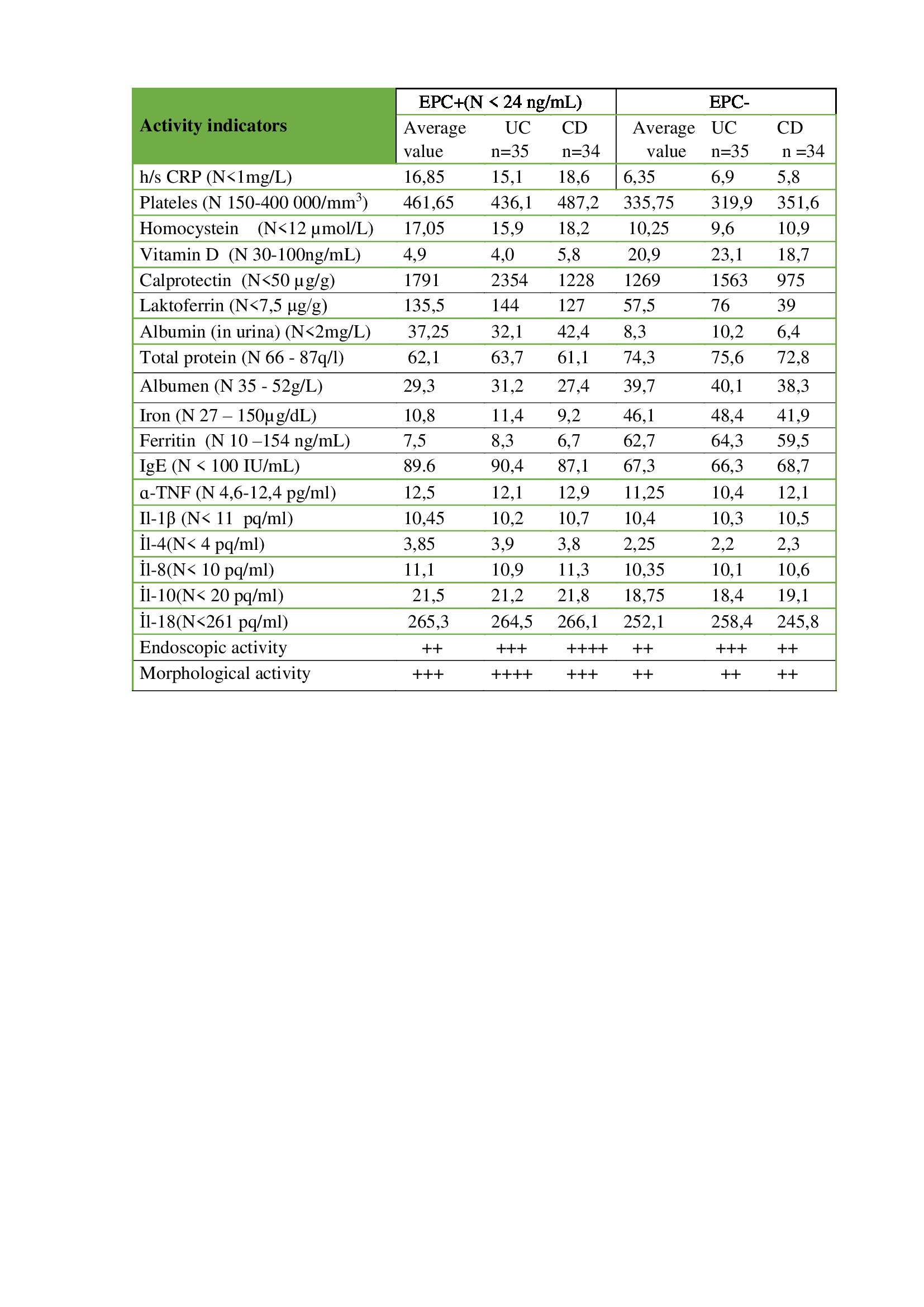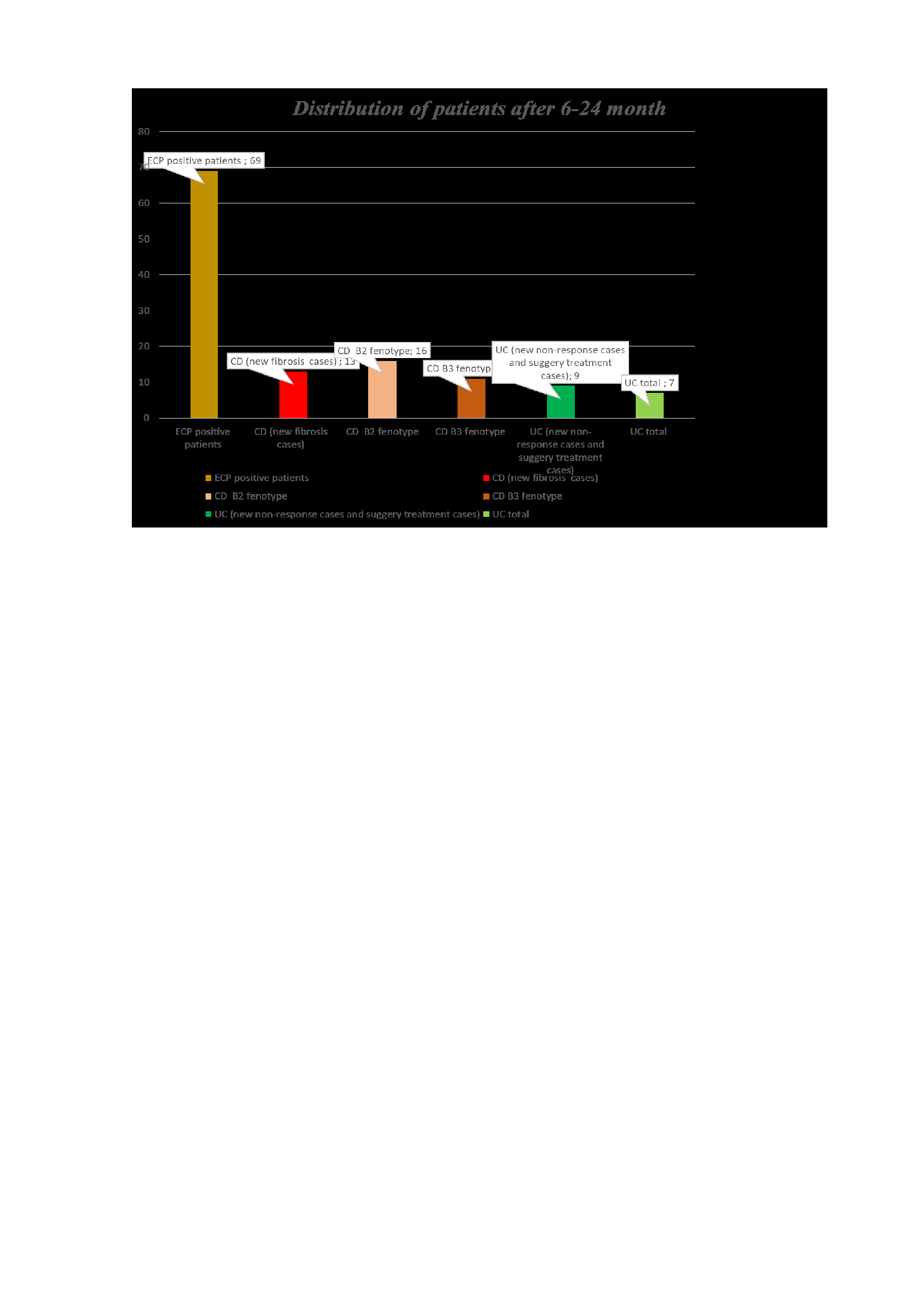P343 Eosinophilic inflammation as an indicator of the activity of the course of Inflammatory Bowel Diseases
Babayeva-Sadigova, G.(1)*;Asadova, G.(2);Quliyev , F.(2);Makhmudov , U.(3);Ismayilova , K.(1);Samedova , T.(2);Hasanova , A.(4);Mirzazada , O.(4);Mahammadaliyeva , M.(4);Abdulzada , C.(4);Musayev, C.(5);Iskenderov , N.(6);
(1)Azerbaijan State Advanced Training Institute for Doctors named after A.ALIYEV., department of therapy, Baku, Azerbaijan;(2)National Oncology Center, department of invazive diagnostic and treatment, Baku, Azerbaijan;(3)Modern Hospital, department of gastroenterology, Baku, Azerbaijan;(4)Azerbaijan State Advanced Training Institute for Doctors named after A.ALIYEV, department of Therapy, Baku, Azerbaijan;(5)Baku Patology Center, department of patomorphology, Baku, Azerbaijan;(6)Memorial Klinik, department of laboratory diagnostic, Baku, Azerbaijan; IBD
Background
Eosinophils have been identified as cells that promote immune cell infiltration in inflammatory bowel diseases (IBD). Activation of eosinophils causes degranulation, which can lead to tissue damage due to the release of toxic oxygen radicals, including eosinophilic cationic protein (ECP). The potential role of eosinophils in inflammation and fibrosis in patients with IBD remains relevant.
Purpose of the study: to study the effect of changes in the level of eosinophilic cationic protein on the activity of the course of inflammatory bowel diseases.
Methods
The study was conducted from January 2016 to April 2022, among 400 patients with IBD (MC 12 patients, women 8, men 4; UC 150 patients, women 71, men 79; CD 238 patients, women 120, men 118). Patients underwent endoscopy with biopsy sampling for pathomorphological examination, as well as laboratory blood tests (general blood count, h/s CRP, homocysteine, vitamin D, ANCA-parameters, α-THF and IL-1β, IL-4, IL -8, IL-10, IL-18, total protein, albumin, iron, ferritin, eosinophilic cationic protein (ECP), İgE; urinalysis and urinary albumin; fecal analysis and fecal calprotectin and lactoferrin.
Results
In 250 patients (62.5%) with a poor response to basic therapy, a study was conducted on ECP and in 69 cases (27.6%) the result was positive, the number of positive endoscopic manifestations was 190 (76%), the number of patients with a positive pathological conclusion for the presence of eosinophils in the biopsy material (more than 30-35 eosinophils per field of view) - 95 (38%), the number of patients with concomitant allergic diseases - 14 (5.6% / 20.2%). The level of EPC fluctuated within 29-228 ng/mL (N<24 ng/mL). Indicators for the studied parameters are presented in Table 1.
Table 1. Changes in activity in some laboratory, endoscopic and pathological parameters

During the follow-up in the group of patients with elevated levels of eosinophilic cationic protein for 6-24 months, some changes occurred: new cases of fibrosis appeared in patients with CD, as well as cases of non-response to basic therapy and, as an outcome, cases of surgical interventions in patients with ulcerative colitis (Diagram 1).
Diagram 1. Outcome of patients with elevated EPC levels
Conclusion
The increase in the level of ECP in the study group of patients was 27.6% and correlated with higher rates both in laboratory and in endoscopic and morphological activity of IBD. The study of the increase in ECP is of interest in the context of the "non-response" marker to basic therapy in IBD and in the search for new targets for treatment.


